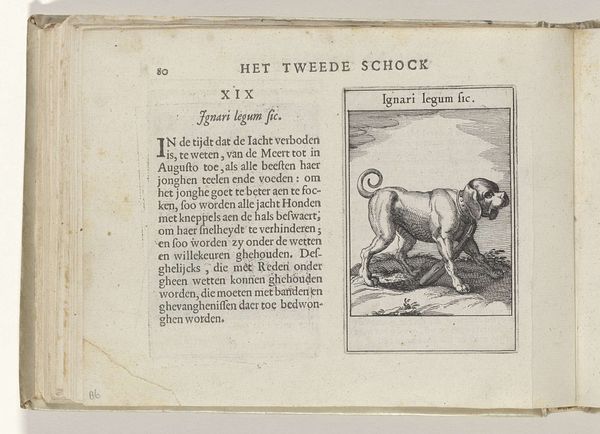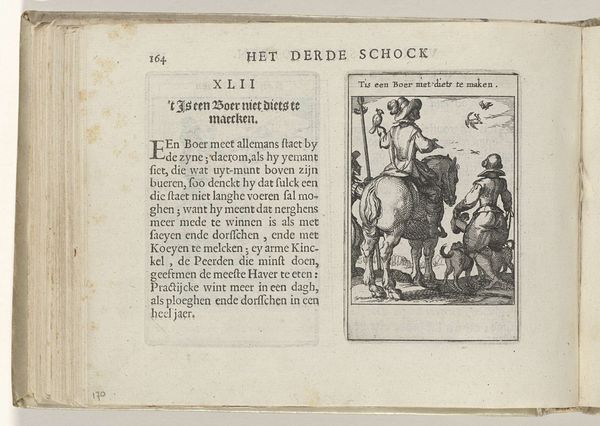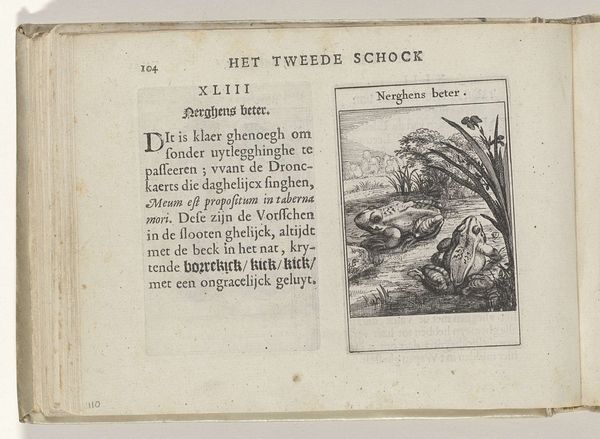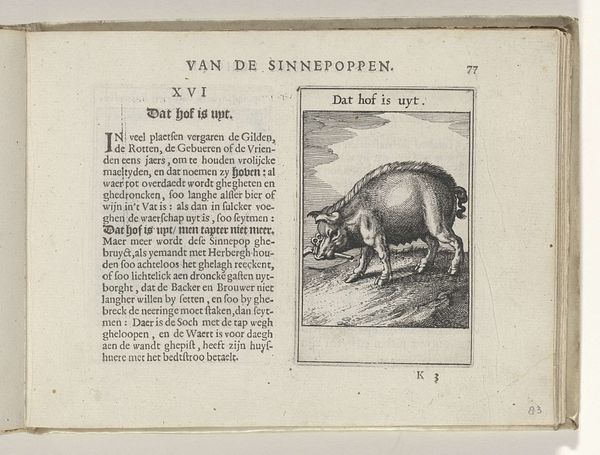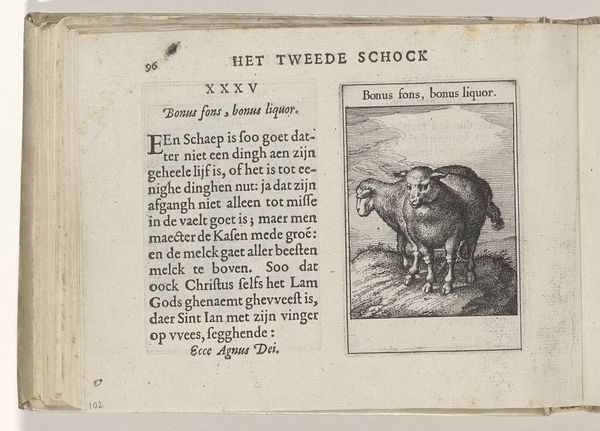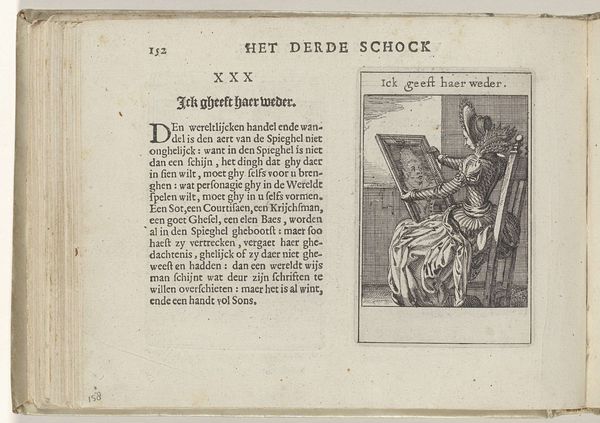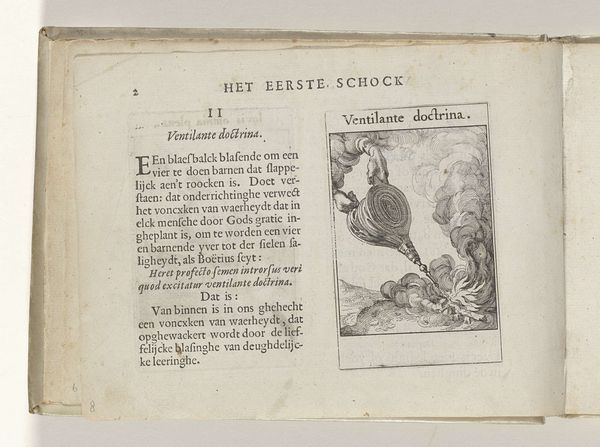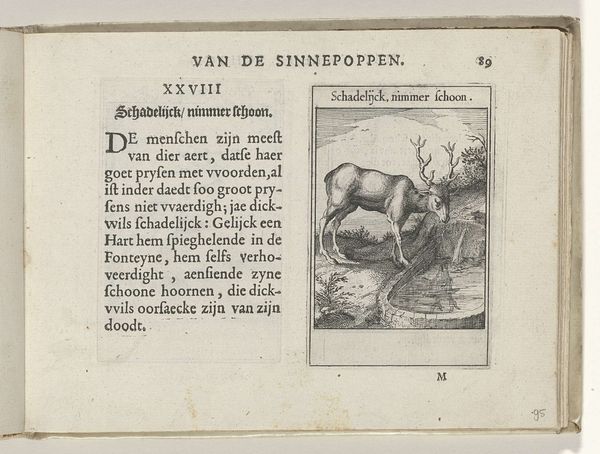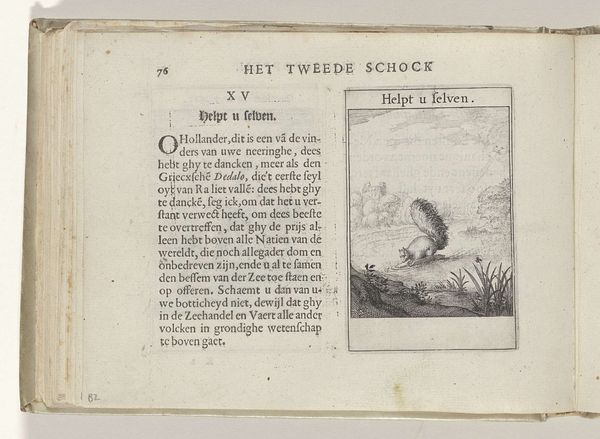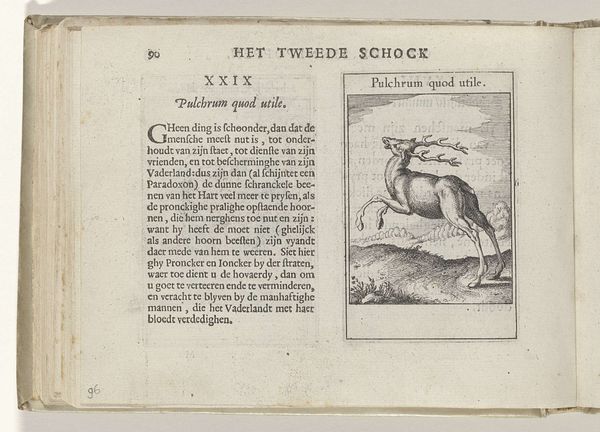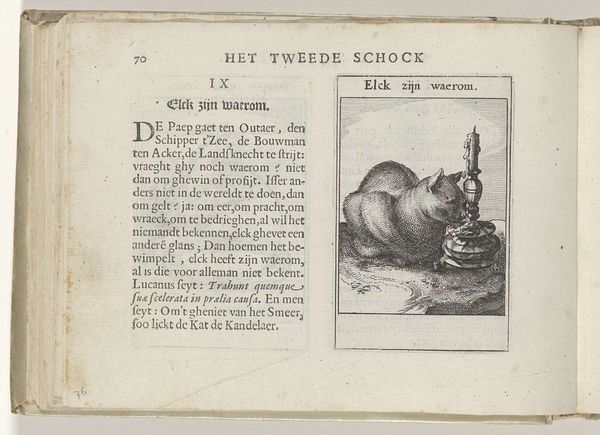
#
aged paper
#
toned paper
#
sketch book
#
personal sketchbook
#
pen and pencil
#
sketchbook drawing
#
watercolour illustration
#
storyboard and sketchbook work
#
sketchbook art
#
watercolor
Dimensions: height 137 mm, width 188 mm, height 95 mm, width 60 mm
Copyright: Rijks Museum: Open Domain
Editor: This is a page from Roemer Visscher's sketchbook, dated 1614. It seems to be pen and pencil on aged paper, with a watercolour illustration of a cow. The illustration looks so delicate and intentional, especially set against the dense text, but I'm not sure what to make of it. How do you interpret this work? Curator: It’s crucial to recognize that the image is both a realistic depiction and a symbol deeply embedded in the social and economic fabric of 17th-century Netherlands. The cow here isn’t just livestock, but a representation of prosperity, land, and even female fertility within a patriarchal agricultural system. Editor: So the cow stands in for bigger ideas about wealth? Curator: Exactly. Consider the context: The Dutch Golden Age was fueled by trade, but also fundamentally reliant on agriculture. How might Visscher be using this imagery to comment on Dutch society? The accompanying text speaks of wealth, land, and generational inheritance. It could also be highlighting potential societal imbalances or even commenting on gender roles related to wealth management and domestic responsibilities. Editor: It's interesting you mention gender! I was drawn to the phrase, "Seghent God de zyne". Are those gendered possessives? I'd not considered it but perhaps the art comments on social inequalities of that era, rather than purely wealth? Curator: Indeed. Looking at this sketch through the lens of feminist theory might reveal how women's contributions to agrarian wealth are being represented or obscured, considering that 'his' possessions are divinely blessed. What do you make of the size difference between the text and image? Editor: Perhaps to represent the balance between the written word and the pastoral environment on which wealth relied, as opposed to pure capitalism. I see how context can change your interpretation of such a simple image. Curator: Absolutely, art from the past is not static but rather reflects continuous dialogue on current social issues, provided we continue to explore and analyse it with updated frameworks.
Comments
No comments
Be the first to comment and join the conversation on the ultimate creative platform.

